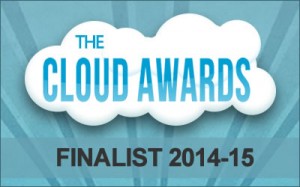SIOS Technology Corp. (www.us.sios.com), maker of SAN and #SANLess clustering software products, today announced that Spirent is using SIOS DataKeeper Cluster Edition to protect its business critical applications in the Amazon EC2 cloud. Because the SIOS software is integrated with Microsoft Windows Server Failover Clustering (WSFC), it did not add complexity and was easy for Spirent IT staff to deploy.
Spirent is a global leader in communications test and measurement with 20 locations in 15 countries worldwide. The company develops innovative hardware and software solutions and test methodologies for the communications industry. The Spirent IT department is continuously looking for ways to improve efficiency and maintain the highest quality of service to customers. They recognized that moving their operations to the Amazon cloud would provide a variety of benefits. “We saw an opportunity to gain significant flexibility, scalability, and efficiency by moving to the Amazon EC2 cloud,” said Sohamn Chatterjee, senior business systems architect, Spirent Communications. “This move lets us grow quickly and apply additional IT resources as our needs change.”
For the move to the cloud to be successful, Spirent IT staff needed to provide high availability for its Siebel Gateway Server and File Server application environments. “We could not move important applications to the cloud until we were sure that we would not be putting them at risk for downtime or data loss,” said Chatterjee. “The traditional shared storage clusters that we would have used in a physical environment require shared storage, which is not available in EC2.”
Spirent chose SIOS DataKeeper Cluster Edition to protect its business critical applications. They built two-node clusters in the cloud using standard WSFC and adding SIOS DataKeeper Cluster Edition software as an ingredient. The SIOS software uses efficient, real-time replication to synchronize storage between instances in different Availability Zones, making them appear to WSFC as a SAN.
“We were able to configure the clusters just as we would in a WSFC environment so we did not need specialized skills or a SAN administrator,” said Chatterjee. “The SIOS software enabled us to implement our move to the cloud efficiently.”
The SIOS software provided the protection Spirent needed to move its important applications to the cloud. Since their cluster deployment, they have not experienced any downtime or data loss in their Siebel or File Server environments. They have also found the SIOS SANLess clusters make failover/failback testing fast and easy. “We are very pleased with the SIOS software and the protection our SIOS SANLess clusters provide for both our Siebel Gateway Server and File Server application environments in the Amazon EC2 cloud,” said Chatterjee.
“An essential ingredient in any cluster solution, SIOS SAN and SANLess clustering software provides the flexibility to build clusters to protect any choice of Windows or Linux environment and any configuration (or combination) of physical, virtual and cloud (public, private, and hybrid) storage, without sacrificing performance or availability,” said Jerry Melnick, COO of SIOS Technology. “We are very impressed with Spirent’s innovative use case with two node clusters in the cloud.”
About SIOS Technology Corp.
SIOS Technology Corp. makes SAN and #SANLess software solutions that make clusters easy to use and easy to own. An essential part of any cluster solution, SIOS SAN and #SANLess software provides the flexibility to build Clusters Your WayT to protect your choice of Windows or Linux environment in any configuration (or combination) of physical, virtual and cloud (public, private, and hybrid) without sacrificing performance or availability. The unique SIOS #SANLess clustering solution allows you to configure clusters with local storage, eliminating both the cost and the single-point-of-failure risk of traditional shared (SAN) storage.
Founded in 1999, SIOS Technology Corp. (www.us.sios.com) is headquartered in San Mateo, California, and has offices throughout the United States, United Kingdom and Japan.
Read this article on DBACC.
 SAN MATEO, CA – December 17, 2014 –
SAN MATEO, CA – December 17, 2014 –